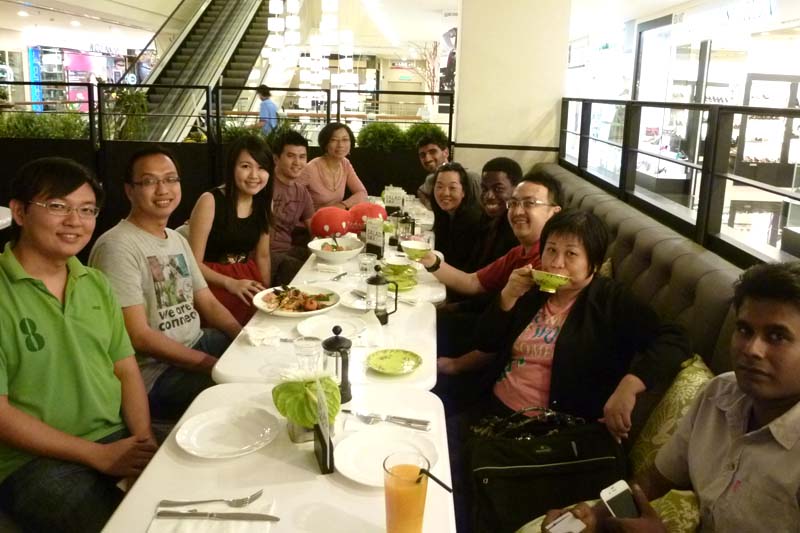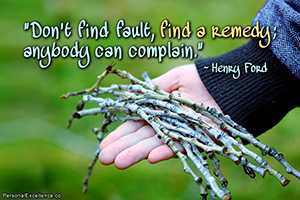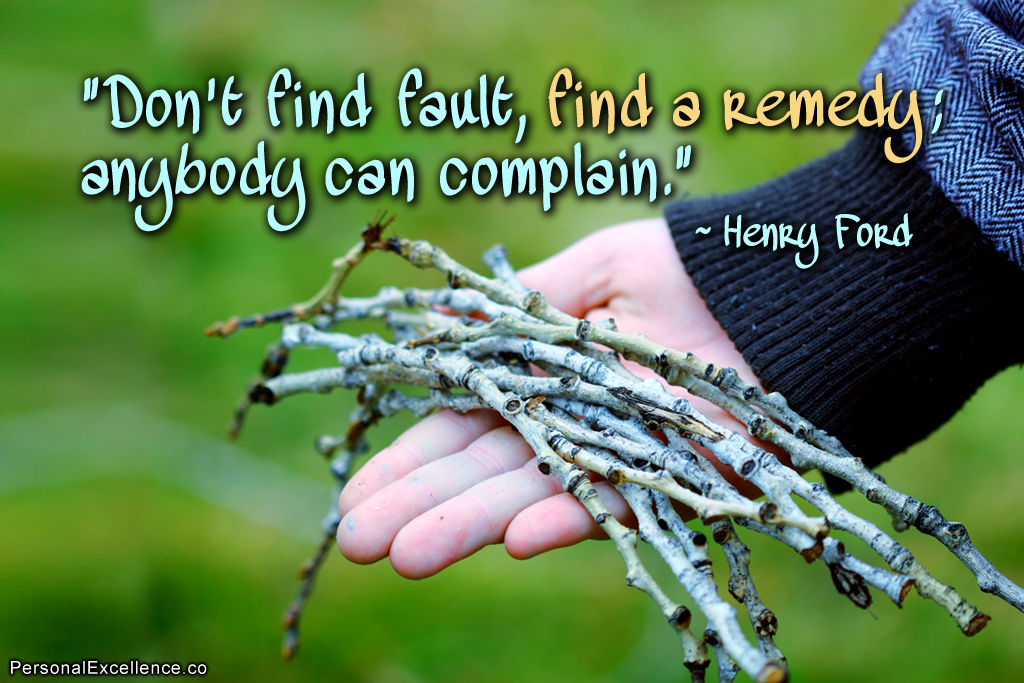

PE readers meet-up in Kuala Lumpur, Malaysia (Oct 2012) (Image: Personal Excellence)
“As a quiet person by nature, how can I be more sociable? I do not have many topics to talk about with others.” — Starry Starry Night
“I was wondering if you could write on how to start and maintain a good conversation. Maybe something cool like ‘The Art of Small Talk.’” — Elfie
Several months ago, I covered 10 rules to be a great conversationalist. Seeing how I have not written about starting conversations and I’ve been getting questions on that through Ask Celes, I thought, Why not do an article on that?
I don’t like small talk (in the sense of frivolous conversations), but I recognize their purpose as conversation openers and space fillers in otherwise enjoyable conversations, tools to discover tidbits about the other party, or tools to decrease social distance (such as a manager using small talk to engage a team member).
If you are someone who has difficulty getting conversations started or keeping them going, here are five methods that will help:
1. Ask a Question
The run-of-the-mill way of starting conversations. I use it all the time.
Five usual questions from my toolbox and sample questions you can use:
- “What do you do?” — Great for countries with work-centered cultures, such as Singapore and Hong Kong. People here tend to tie their identities with their work and invest a good deal of time working and thinking about their careers. They usually have no problems giving lengthy replies about work, especially if you pose follow-up questions, and are in fact more comfortable fielding work questions than personal ones like, “What is your passion?”, “What do your siblings do?”, or “What do you do in your free time?”This question is also a great opener for business and work events. Since everyone is there on a work agenda, they would be ready for work-talk.
After this opener about work, there are tons of questions you can follow up with. From “How long have you been working here?”, to “Do you like your job?”, to “What made you join this company?”, to “Who are the clients you work with?”, to “Where is your work place?”, to “Do you travel as part of your work?”, the possibilities are endless.
- “What brings you here today?” — A useful one for events, be it house parties, social events, or business functions.Use the response as conversation fodder. “I’m here to meet new friends” means the person is open to socialize. Perhaps you can share social events coming up in your calendar. “I got the invite from the mailing list” means the person is already a member of their newsletter. You can follow up on this by asking when he/she joined the list and how he/she knew about this place. And so on.
- “What did you do today?” , “What have you been up to?“, or “What have you been busy with?” — Sometimes the responses are of routine stuff, while other times they reveal fun tidbits about the person. Bridge on things you can talk about to build a connection.
- “How did XX go?” — If you know something the person has been up to, follow up on that! For example, I just met my friends who returned from a vacation in Sydney, so one of my first questions after seeing them was, “So how did your Sydney trip go?”
- “What are you up to this week?” — Since this question is about what’s next, it’s more appropriate to use it in the later half of the conversation, as a space filler if you’ve ran out of things to say.
Two Watchouts
- As you ask questions, be prepared to share about yourself. Refer to #8 of 10 rules of a great conversationalist on 50-50 sharing. Asking one question after another without sharing anything can be perceived as invasive. You want to have a conversation, not an interrogation or an interview.
- Learn to take a hint and move on when the person gives lukewarm responses. I was at a hair saloon last week and this assistant just kept asking me question after question, in a relentless fashion, even after I got tired out by her and gave monosyllabic responses. She obviously couldn’t read social cues as I was showing disinterest, both in my responses and body language. It got to the point where I became highly annoyed by her nosiness and was ready to ask my regular consultant to take her away.You don’t want to annoy people nor intrude into their personal space. Third time is the charm—I usually move on after the third consecutive lukewarm response. Besides, you can’t have a conversation if the other party isn’t interested to engage.
2. Drop a Compliment
Examples:
- “That is a nice dress! It looks great on you. Where did you get that?” (Works better from girl to girl; else you’ll either come across as gay or trying to hit on the girl, both of which wouldn’t work if they aren’t true.)
- “I like your bag! Very classy. Did you just buy it?”
- “You look very refreshed. Did you have a good rest over the weekend?”
- “Hey Matt, I just read your report on social existentialism and the role of dummies in our society. Awesome work! How long did it take for you to write that?”
- “Great job on the presentation this morning Max. Everyone was talking about it at the pantry just now!”
- “You look great today. :) “
Why Compliments Work
Compliments are a great way to reduce social distance, remove tension, and open someone up. They are especially appreciated in a society where emotional generosity isn’t commonplace.
I personally love it when people drop me compliments. Their emotional generosity sends all-round-nice vibes to everyone.
- Friend/Stranger: “You look great today!”
- Me: “Thank you!” *beams* (This then opens the space for a follow-up comment.)
I also love dropping compliments to other people and making them smile.
- Me: “You look great with this shirt!”
- Friend/Stranger: “Oh, thanks! I just bought it last week. I was actually planning to wear a different shirt! I’m glad you like it!” *which then opens up new conversation topics, such as where he/she bought the shirt and why he/she was planning to wear a different shirt*
I think most people’s issue with compliments is that they associate them with disingenuousness, being agenda-driven, or sucking up. That’s quite a fear-based manner of viewing compliments, and it probably comes from being brought up in an emotionally-stingy culture. Giving compliments doesn’t have to be related with falseness or having a motive; in fact it doesn’t have to do with anything at all. You can drop compliments simply because you see goodness in something and you just want to spread the love.
As long as you keep your compliments real, there’s no reason to shy away from them.
3. Use a Surrounding Object as an Anchor
- (At a talk) “The speaker is doing a great job. I like the section where he talked about the role of innovation in startups. What do you think about that?”
- (At a social event) “I had such a hard time finding the location! It took me about 20 minutes to find the place. What time did you get here?”
- (At your workplace) “Regis totally lost his temper at the morning meeting. Did you hear about it?”
- (At a cafe, while queuing up to get your drinks) “I love the dark chocolate mocha here. Have you tried it before?”
- (At the supermarket, at the ramen aisle) “I’m thinking between the Mushroom-Flavored Ramen and Hot & Spicy Ramen and I’m not sure which one to pick. Which do you think I should go for?” (This is related to Method #4: Ask for Help / Advice.)
Using a surrounding object takes the attention away from both you and the person and creates a safe zone for both of you to connect without going into personal details. After some sharing and after a certain comfort level has been achieved, you can broach personal topics.
Be open to using different surrounding objects as your conversation starter. It can include the person’s possessions:
- (Referring to the tie the person is wearing) “I saw a similar tie at Macy’s last week and wanted to get that. Did you get this at Macy’s?”
Or even someone else:
- (Referring to another participant at an event) “I’ve seen that person at similar events before. I heard he/she is the director at Firm Y. Have you talked to him/her yet?”
4. Ask for Help / Advice
I had quite a blast chatting with this guy, who heads a PR firm, at a Christmas party last month. We had a stimulating conversation which spun off multiple sub-topics and lasted for a good 30–40 minutes.
My opener? I asked him for advice on a goal I’m currently working on.
“Hey, since you are in PR, I was thinking to get your advice on something. One of my goals is to up my blog traffic from one million page views a month to ten million. How would you advise me to achieve that?“
Since it’s something I’m working on and blogging/social is relevant to his space (PR), and everyone peruses one blog or another as a consumer these days, I thought, why not kill two birds with a stone and use my business agenda as a socialization tool?
This one innocent question got us talking about site analytics, content, viral content, what makes viral content, why it’s pointless to try and create viral content, some of his past client engagements, blogs he reads, why he reads them, and wildly popular content we came across in our space.
At the end of the discussion, he thanked me for bringing up the topic because it got his brain spinning. I thought that was nice of him. “Thanks!” I smiled, while thanking him for his thought-provoking answers.
Why Asking for Help / Advice Works
People love to help. Helping makes them feel important. Helping makes them feel like they are adding value to people’s lives. Helping puts them in an advisory role which hones the leader in them.
I appreciate it when people ask me for advice, even if it’s something I do not have expertise on.
For example, I have a friend who is an experienced business investor. Sometimes he will ask me for advice on projects he is working on. It could be about logo designs, business investment decisions, or something else altogether. While I may not have 100% experience in everything that he asks, I feel valued when he seeks my point of view. I then do my best to share my perspective, while learning more about this.
When you ask someone for advice, it benefits the people both ways. For you, you get to learn about different ideas. For them, they learn about something you’re doing, and possibly grow from the exchange. Such an exchange helps both of you learn more about each other as friends.
Sample Scripts to Ask for Help / Advice
Is there anything you could use some advice on at the moment? Use that as a conversation opener — you will be surprised by how ready people are to help. Try the following scripts:
- “I’m working on this project and I hope to achieve X. [Insert two to three line description about said project.] What do you think?”
- “I’ve been thinking about something for the past few days and I could use with a new perspective. [Insert description.] What are your thoughts?”
- “I’d like your advice on [insert topic and some background information]. What advice can you give me?”
- “I’m currently looking for X resource/contact for something I’m working on. Do you know anyone who can be of help?”
- “I’m planning to do X and I’m thinking of either Option A or Option B. Which would you choose?
Even you don’t really have anything you need advice on at the moment, it’s great to get a new perspective on whatever you are working on. I do that all the time, be it for my business plans, decisions I’m contemplating over, or personal agendas. It could even be as simple as picking a movie to watch this Friday!
The interesting thing is that as people crack their brains to give good advice, their self-monitoring personas recede and their real personalities emerge from their shells. That’s when real connections form.
5. Share Something about Yourself
What did you just do recently? What new things you’ve been up to? What are your goals for the next three months? Share them.
This method is the opposite of method #1. Here, you open up the conversation by volunteering information about yourself, whereas in method #1, you open the conversation by fishing for information about the person.
This method is useful in situations where:
- …the person looks shy or socially awkward. Sharing about yourself helps to take attention away from him/her and onto you, so he/she can ease into his/her own space.
- …the person hasn’t been responsive to your questions or comments. Perhaps he/she is not keen on sharing, so you can initiate the sharing instead.In doing so, you remove yourself from the power-position (since the person asking the questions directs the flow of the conversation) and allow yourself to be vulnerable (sharing means subjecting yourself to potential evaluation and judgment). As the person see you opening up, he/she may warm up to you and reciprocate in sharing as well.
I’ve to admit that I’m not good at doing this unless I’m with personal friends, where we have all the time to catch up with one another. I prefer to use the limited time I have with strangers/new friends to learn more about them.
My friend Karl is really good at sharing though. In one of the first times we met, he shared this story about how his luggage got misplaced and he had to borrow a grossly undersized pants from his co-worker for a business training, where he was the trainer in a crowd of some 100 people. It was hilarious. Other times, he would share random things going on in his life.
I may not relate to everything that someone shares (for example, I haven’t had my luggage misplaced before), but it’s nice learning about someone through their stories and knowing more about them based on how they approach their life circumstances. It then creates a safe space for me to share about myself, because just as I’m interested to listen their stories, they would probably be interested to hear mine as well.
A conversation is a two-way exchange. Instead of expecting the other party to talk, why not make the first move and volunteer some tidbits about yourself?
To You
How can you apply these conversation-starter techniques in your life? Do you have any techniques of your own in making small talk?
This is part of a series on interpersonal communication.
- The Secret To Meaningful Social Relationships (How to Remove Social Anxiety)
- How to Make Small Talk with Anyone in 5 Easy Ways (Examples Included!)
- 10 Rules of a Great Conversationalist
- Are You Keeping People Away With Your Body Language? (And 10 Tips To Improve Your Body Language)
- How To Make a Good First Impression









![5 Tips to Deal with Negative Criticism [Video]](https://personalexcellence.co/files/celestv-negative-criticism-200x133.jpg)
 Thanks for reading. If you like my free articles, join my private email list and get my latest updates and articles sent right to your inbox.
Thanks for reading. If you like my free articles, join my private email list and get my latest updates and articles sent right to your inbox.